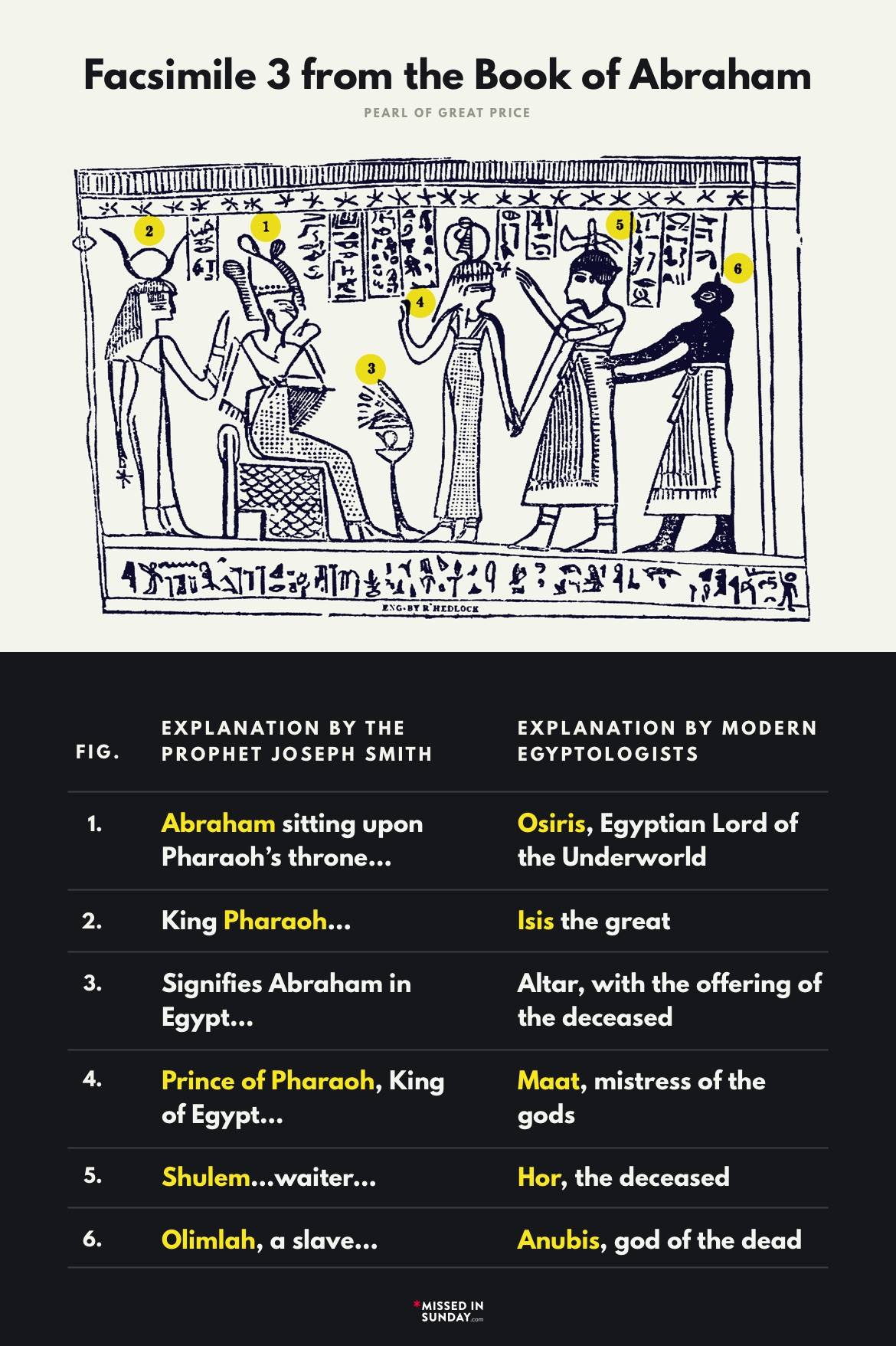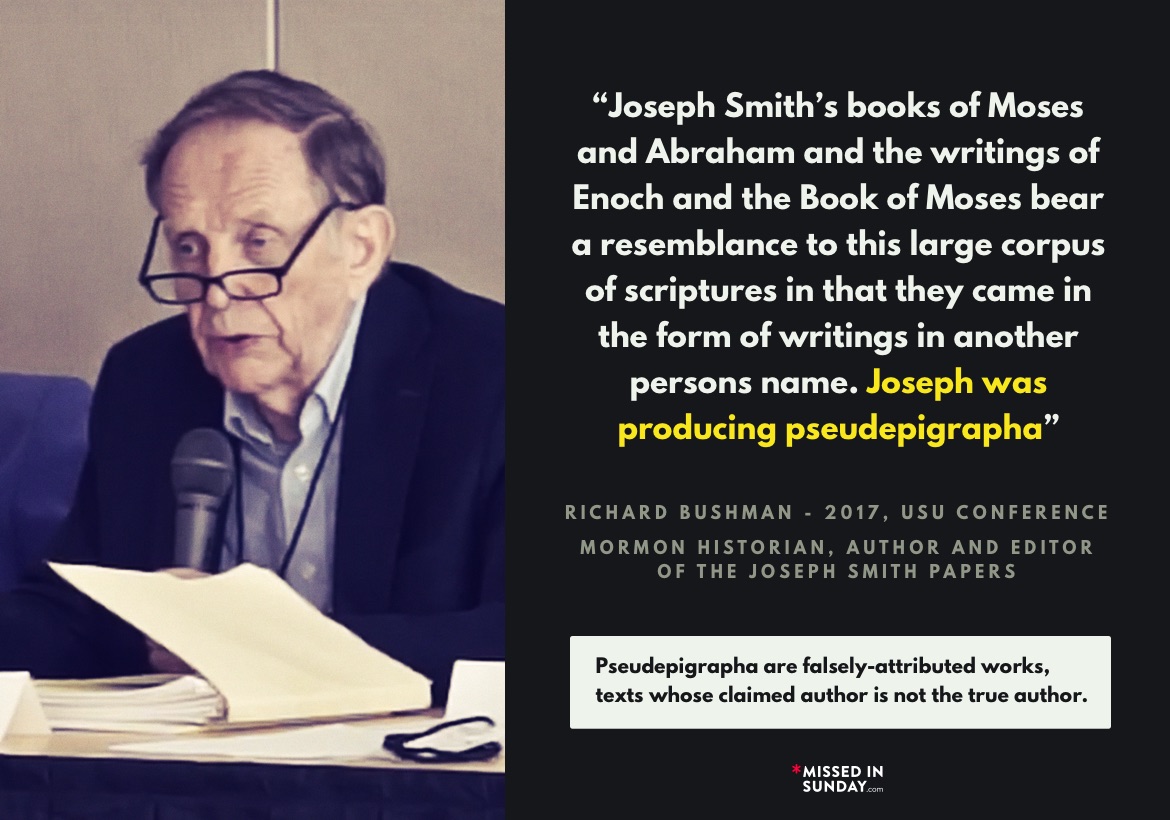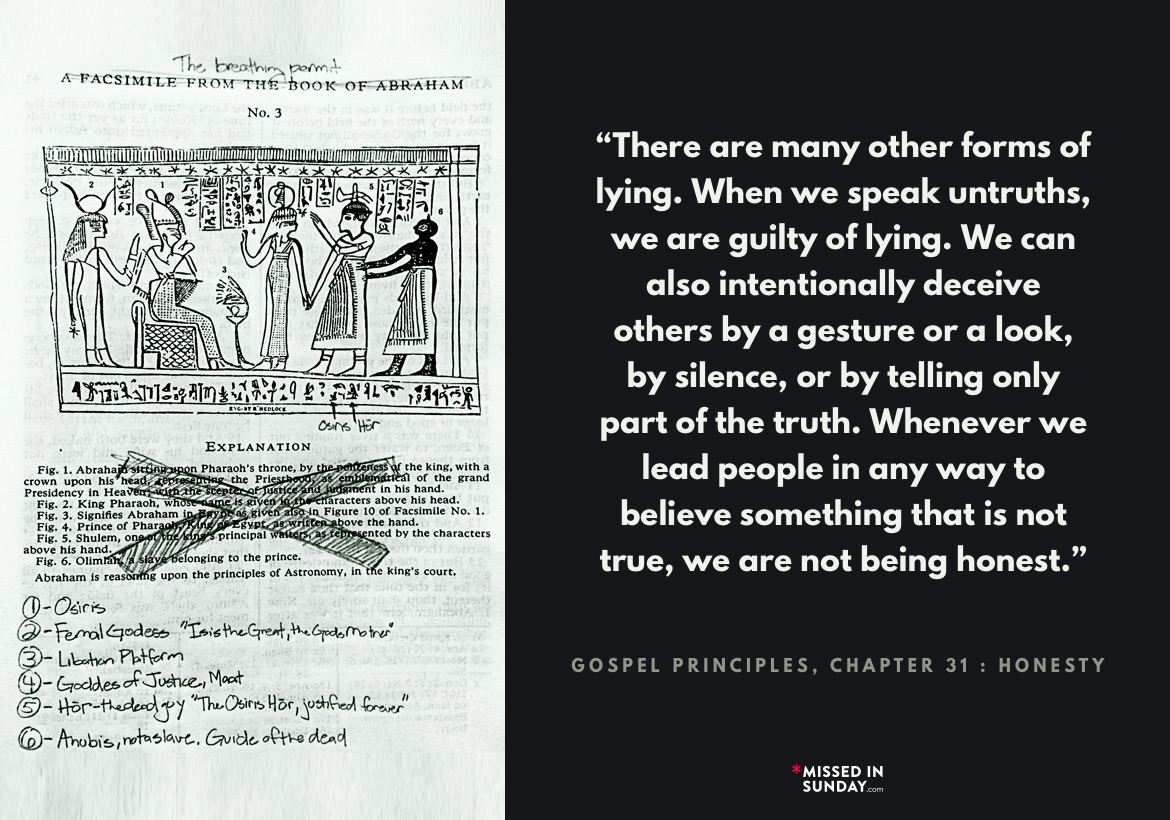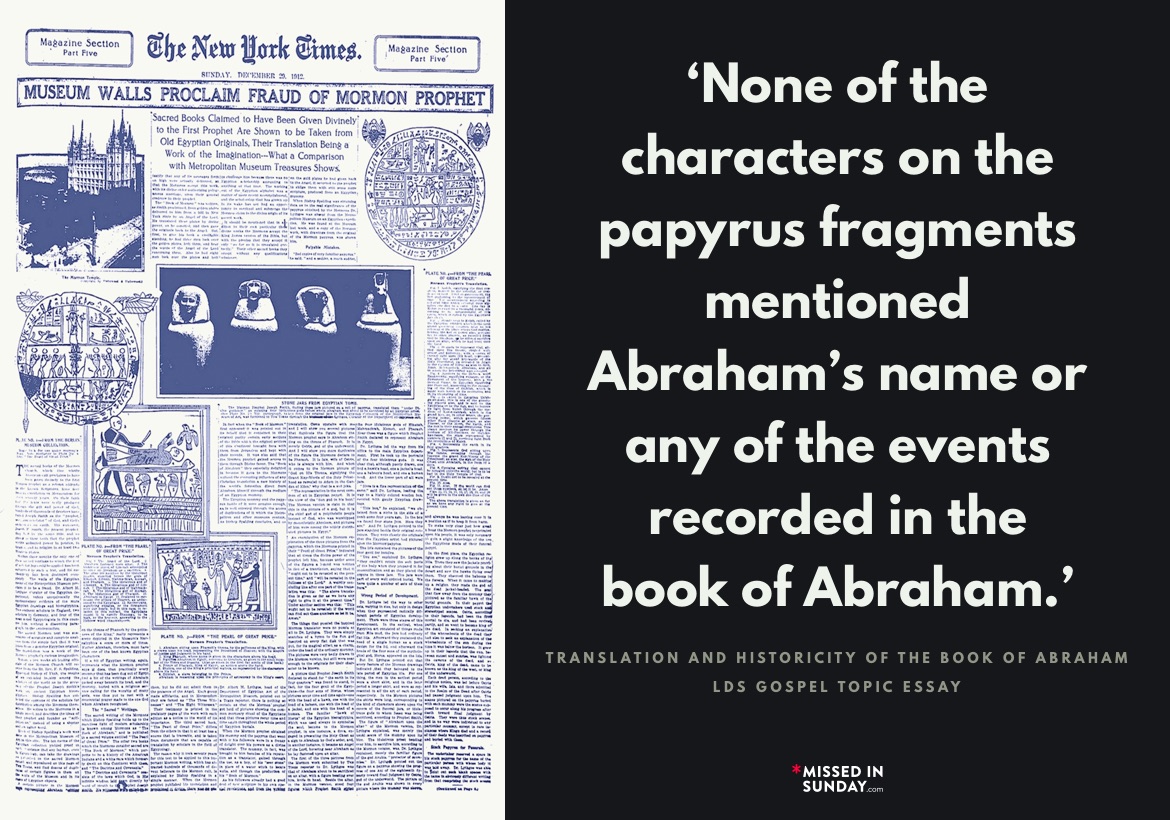From ‘A Facsimile from the Book of Abraham No. 3’ explained by Joseph Smith Jr.: 1
Explanation
Fig. 1. Abraham sitting upon Pharaoh’s throne, by the politeness of the king, with a crown upon his head, representing the Priesthood, as emblematical of the grand Presidency in Heaven; with the scepter of justice and judgment in his hand.Fig. 2. King Pharaoh, whose name is given in the characters above his head.
Fig. 3. Signifies Abraham in Egypt as given also in Figure 10 of Facsimile No. 1.
Fig. 4. Prince of Pharaoh, King of Egypt, as written above the hand.
Fig. 5. Shulem, one of the king’s principal waiters, as represented by the characters above his hand.
Fig. 6. Olimlah, a slave belonging to the prince.
Abraham is reasoning upon the principles of Astronomy, in the king’s court.
Modern Egyptological explanation: 2
Fig. 1. Label for Osiris (text to the right of figure 1 of Facsimile No. 3): Recitation by Osiris, Foremost of the Westerners, Lord of Abydos(?), the great god forever and ever(?)
Fig. 2. “Label for Isis (text to the right of figure 2 of Facsimile No. 3): Isis the great, the god’s mother.”
Fig. 3. “Altar, with the offering of the deceased, surrounded with lotus flowers, signifying the offering of the defunct.”
Fig. 4. “Label for Maat (text to the left of figure 4 of Facsimile No. 3): Maat, mistress of the gods.”
Fig. 5. “Label for Hor the deceased (text in front of figure 5 of Facsimile No. 3): The Osiris Hor, justified forever.”
Fig. 6. “Label for Anubis (text in front of figure 6 of Facsimile No. 3): Recitation by Anubis, who makes protection(?), foremost of the embalming booth…”
“Invocation (text at bottom line below the illustration): O gods of the necropolis, gods of the caverns, gods of the south, north, west, and east grant salvation to the Osiris Hor, the justified, born by Taikhibit.”
Additional Study
Translation and Historicity of the Book of Abraham, LDS – https://www.lds.org/topics/translation-and-historicity-of-the-book-of-abraham?lang=eng
Critical appraisal of the Book of Abraham, wikipedia – https://en.wikipedia.org/wiki/Critical_appraisal_of_the_Book_of_Abraham#cite_note-ritner2003167177-126
Translation of The Hor Book of Breathings, BYU Professor Michael D. Rhodes – https://archive.org/stream/SnsnTranslation#page/n0/mode/2up
“Translation and Historicity of the Book of Abraham” — A Response, Egyptologist Robert K. Ritner – https://oi.uchicago.edu/sites/oi.uchicago.edu/files/uploads/shared/docs/Research_Archives/Translation%20and%20Historicity%20of%20the%20Book%20of%20Abraham%20final-2.pdf
The Joseph Smith Papyri [Book of Abraham] video – https://youtu.be/f5FAFVVv_os
References
| 1 | A Facsimile from the Book of Abraham No. 3 – https://www.lds.org/scriptures/pgp/abr/fac-3?lang=eng |
|---|---|
| 2 | Translation of The Hor Book of Breathings, BYU Professor Michael D. Rhodes – https://archive.org/stream/SnsnTranslation#page/n0/mode/2up |





